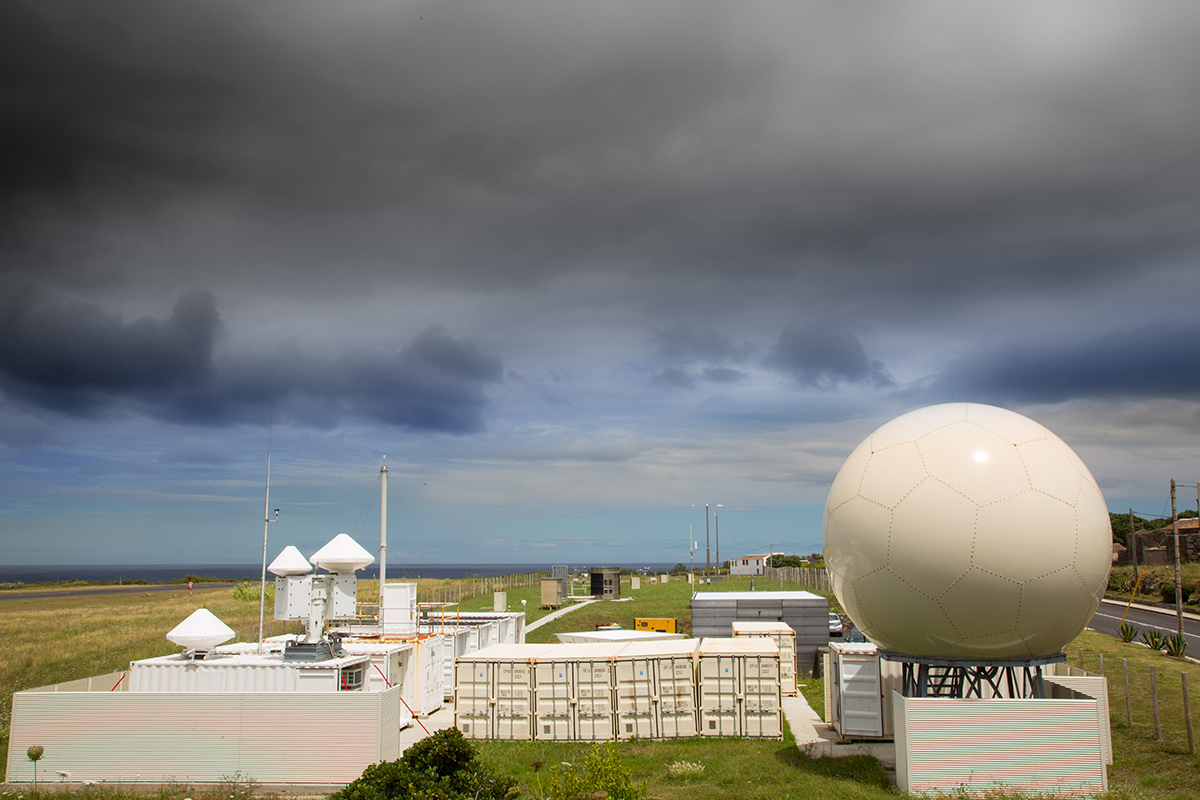LASSO-ENA Spectral-Bin Simulations Coming Soon
Published: 22 September 2025
Editor’s note: William Gustafson, principal investigator for the Large-Eddy Simulation (LES) ARM Symbiotic Simulation and Observation (LASSO) activity, provided the following blog post.

The LASSO team has been busy during fiscal year 2025 (FY2025) producing simulations for our next LASSO scenario, which focuses on shallow marine clouds at ARM’s Eastern North Atlantic (ENA) atmospheric observatory. As FY2025 closes, we are excited to share an update with you about our new data set, LASSO-ENA.
Shallow clouds are ubiquitous features of the marine environment that play important roles in both the energy and hydrologic cycles. However, their small size and reliance on delicate balances between physical processes make them difficult to simulate in global atmospheric models, such as DOE’s Energy Exascale Earth System Model (E3SM). For LASSO-ENA, we have been generating ensembles of simulations for roughly 60 case dates using the System for Atmospheric Modeling (SAM) LES model, including some dates from the Aerosol and Cloud Experiments in the Eastern North Atlantic (ACE-ENA) field campaign.
Each case has a combination of two large-scale forcing options, either the European Centre for Medium-Range Weather Forecasts Reanalysis version 5 (ERA5) or the Modern-Era Retrospective analysis for Research and Applications, Version 2 (MERRA-2), and three aerosol options based on a low, medium, or high aerosol concentration. The resulting six-member ensembles provide researchers with a foundational set of simulations to investigate aerosol-cloud sensitivity and cloud processes related to these marine clouds. These cases include meteorological conditions leading to cloud morphologies ranging from open- to closed-cell conditions.
This year, we focused on simulations that use spectral-bin microphysics, specifically the Hebrew University of Jerusalem (HUJI) parameterization, which provides improved cloud and boundary-layer simulations over simulations with bulk microphysics. This attests to the sensitive balance between cloud formation and the boundary layer under certain conditions. The initial set of spectral-bin simulations includes only warm-phase clouds to reduce computational cost. We are in the process of running a handful of cases with ice activated to examine the sensitivity of these shallow clouds.
Access to LASSO-ENA Data
Running simulations is just one part of LASSO. Just as important is making the library of simulations easily accessible to you, the researchers. The LASSO and ARM Data Center teams have partnered to develop a new variant of the LASSO Browser for LASSO-ENA. The website infrastructure is all ready, and the content is being populated as we go to press with this blog post.
Similar to the earlier LASSO scenarios for shallow convection at ARM’s Southern Great Plains (SGP) observatory in Oklahoma and deep convection during the Cloud, Aerosol, and Complex Terrain Interactions (CACTI) campaign, LASSO-ENA will include a suite of relevant observation comparisons and skill scores to identify simulations of interest. The LASSO-ENA Browser will also make it easy to select and download desired simulation data.
Keep an eye out for an announcement when the LASSO-ENA Browser goes online in the next month or two. One way you can do this is by signing up for the LASSO email list. Contact lasso@arm.gov with questions or for early access to the simulations via ARM’s Cumulus high performance computing cluster.
We also plan two informational call-in meetings this fall. The first will focus on the formal release of LASSO-ENA and the new simulation ensembles using spectral-bin microphysics. This is scheduled for 1 p.m. Eastern on Friday, November 7. The second meeting, a listening session devoted to developing a LASSO scenario for the Bankhead National Forest (BNF) mobile facility deployment in Alabama, is scheduled for 4 p.m. Eastern on Tuesday, December 2. This listening session is your opportunity to guide priorities and scope for the BNF scenario. You can register to attend through these links for the LASSO-ENA meeting and LASSO-BNF listening session.
Keep up with the Atmospheric Observer
Updates on ARM news, events, and opportunities delivered to your inbox
ARM User Profile
ARM welcomes users from all institutions and nations. A free ARM user account is needed to access ARM data.


















